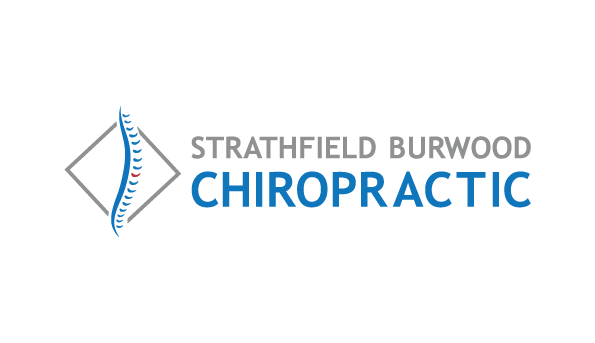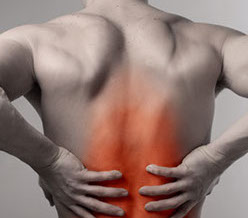
Understanding back pain
There are many common back conditions that we suffer, most of which with varying degrees of pain. Back conditions can be divided into lengthy list of groups, subgroups. This is not at all helpful for most of us when we really want basic information. In the following, we will try to highlight the important ‘need to know’ information.
Acute Vs Chronic
You may have heard terms such as "Acute" or "Chronic" when people talk about back pain. Both terms refer to the relative time following the onset of pain or injury and not to the type or intensity of pain. The term "Acute" is used immediately or soon after the onset of a condition and "Chronic" is used when a condition lasts from 12 weeks or more with continuous symptoms / signs following the onset of the condition.
Spinal Pain
We might as well split up spinal pain into Back Pain and Neck Pain. “Back pain”, as differentiated from “Neck Pain”, may be regarded as any pain from the lowest part of your neck, to your pelvis and everywhere in between. Most people relate “Back Pain” with the lower back or “Lumbar” region.
“The majority of episodes of “Acute lower back pain” are caused by damage to the muscles and/or ligaments in the low back. While a muscle strain doesn’t sound like a serious injury, the resulting lower back pain can be surprisingly severe and is the cause of many emergency hospital visits per year.
Muscle strain occur when a muscle is over-stretched or torn resulting in damage to the muscle fibres. Ligament sprain occurs when ligaments are stretched too far or torn. Ligaments are very tough, fibrous connecting tissues that connect bones together. For practical purposes, it doesn’t matter if it is a muscle strain or a ligament sprain that is causing the pain, since the treatment and prognosis for both are the same.
When the muscles or ligaments in the low back are strained or torn, the area around the muscles will usually become inflamed. This inflammation is the cause of the sensation of pain as it irritates nerve endings directly and also leads to back spasm that can cause both severe lower back pain and difficulty moving. Lower back pain from muscle strain usually is caused by any type of movement that puts undue stress on the lower back. Frequent causes include lifting a heavy object, lifting while twisting, or a sudden movement or fall. Sports injuries are also a frequent cause of a strained back muscle, especially with sports that involve twisting (such as golf), or any types of sudden impact or jarring motions.
Prolonged bad posture is also a major cause of strain and sprain injuries as it causes an abnormal prolonged stretch to the tissue that reduces the integrity of the muscle or ligament and the support given by these tissues. The result permits abnormal movement/injury of these connective tissues of the spine and the subsequent pain.
Symptoms
Symptoms may range from a mild ache to sudden debilitating pain. Typical symptoms of a lower back strained muscle include some combination of the following:
1. The pain is usually localized in the lower back, meaning that it doesn’t radiate into the leg (as in sciatica).
2. The lower back may be sore upon touch
3. Pain usually comes on suddenly
4. There may be accompanying muscle spasms
5. The patient usually feels better when resting, and may find standing or walking difficult.
6. The severe back pain may resolve quickly, but a lower level of pain, or intermittent flare-ups of pain, may continue for a few weeks or months.
7. Fortunately, back muscle strains usually heal with time, with most healing within a few days and almost all resolving within 3 to 4 weeks.
8. The large muscles in the low back have a good blood supply, which bring the necessary nutrients and proteins for healing to take place.
Treatment
Chiropractic is a health care profession dedicated to the non-surgical treatment of disorders of the nervous system and/or musculoskeletal system. Generally, chiropractors maintain a unique focus on spinal manipulation and treatment of surrounding structures.
Many studies have concluded that manual therapies commonly used by chiropractors are generally effective for the treatment of lower back pain1-2, as well as for treatment of lumbar herniated disc for radiculopathy3-4 and neck pain, among other conditions.5 In fact, when patients with non-specific chronic low back pain are treated by chiropractors, the long-term outcome is enhanced by obtaining maintenance spinal manipulation after the initial intensive manipulative therapy.
Core Chiropractic Treatment
The core of chiropractic usually involves treatment of common lower back pain conditions through manual therapy:
Spinal manipulation and manual manipulation.
This type of manual manipulation refers to a high-velocity, low amplitude thrust, that is applied to abnormal moving vertebra with the goal of improving functionality, reducing nerve irritability and restoring range of motion in the back. It is also commonly known as "chiropractic adjustment". There is firm literature support for chiropractic treatment of lower back pain. Many of the published guidelines recommend chiropractic manipulation to be included in the treatment plan early in the care of lower back pain.
Mobilization
Chiropractic mobilisation refers to low velocity manipulation, movement and stretching of the muscles and joints, with the goal of increasing the range of motion within those areas.
Massage
There are many benefits of massage including.
- Reduced muscle tension - Improved circulation
- Stimulation of the lymphatic system
- Reduction of stress hormones
- Increased joint mobility and flexibility
- Improved skin tone
- Speedier healing of soft tissue injuries
- Heightened mental alertness
- Reduced anxiety and depression
-
References
- Rubinstein SM, van Middelkoop M, et. al, “Spinal manipulative therapy for chronic low-back pain,” Cochrane Database Syst Rev (2): CD008112. doi:10.1002/14651858.CD008112.pub2. PMID 21328304.
- Dagenais S, Gay RE, Tricco AC, Freeman MD, Mayer JM (2010), “NASS Contemporary Concepts in Spine Care: Spinal manipulation therapy for acute low back pain,” Spine J 10 (10): 918–940. doi:10.1016/j.spinee.2010.07.389. PMID 20869008.
- Leininger B, Bronfort G, Evans R, Reiter T, “Spinal manipulation or mobilization for radiculopathy: a systematic review,” Phys Med Rehabil Clin N Am 22 (1): 105–25 (2011). doi:10.1016/j.pmr.2010.11.002. PMID 21292148.
- Hahne AJ, Ford JJ, McMeeken JM, “Conservative management of lumbar disc herniation with associated radiculopathy: a systematic review,”Spine 35 (11): E488–504 (2010).
- Bronfort G, DC, PhD, et al. “Effectiveness of manual therapies: the UK evidence report,” Chiropractic & Osteopathy 2010, 18:3.
- Senna, MK, Machaly SA, “Does maintained spinal manipulation therapy for chronic nonspecific low back pain result in better long-term outcome?” Spine 36(18):1427-1437 (2011).
- Globe G, Morris C, Whalen W et al., “Chiropractic Management of Low Back Disorders: Report from a Consensus Process,” Journal of Manipulative and Physiological Therapeutics, November/December 2008: 651-658.
- Bigos S, Bowyer O, Braen G et al., “Acute low back problems in adults. Clinical practice guideline No. 14. AHCPR Publication No. 95-0642,” (1994), Rockville, MD; Agency for Health Care Policy and Research, Public Health Service, U.S. Department of Health and Human Services.
- Meade TW, Dyer S, et al., “Low back pain of mechanical origin: Randomized comparison of chiropractic and hospital outpatient treatment,” Br Med J, 1990; 300:1431-37.
- Meade TW, Dyer S, et al., “Randomized comparison of chiropractic and hospital outpatient management for low-back pain: Results from extended follow-up,” Br Med J, 1995; 311:349-351.
- Complementary Medicine: New Approaches to good practice,” British Medical Assoc, 1993; Oxford Univ Press, 138.
- Manga P, Angus D et al., “The effectiveness and cost-effectiveness of chiropractic management of low-back pain,” Pran Manga and Associates, University of Ottawa, Canada.
- Rosen M Breen A et al., “Management guidelines for back pain, Appendix B in Report of a clinical standards advisory group committee on back pain,” Her Majesty’s Stationery Office (HMSO), London (1994).
- Shekelle PG, Adams AH et al., “The appropriateness of spinal manipulation for low back pain: Indications and ratings by a multidisciplinary expert pane,” RAND, Santa Monica, CA. Monograph No. R-4025/2 – CCR/FCER (1991).
- Kews BW, Bouter LM, et al.,” Randomized clinical trial of manipulative therapy and physiotherapy for persistent back and neck complaints: Results of one year follow up,” British Medical Journal, 1992; 304:601-605.
- MacDonald MJ, Morton L, “Chiropractic evaluation study task III report, report of the relevant literature,” MRI Project No. 8533-D, for Department of Defense, OCHAMPUS, Aurora, Colorado, 24 January 1986.







